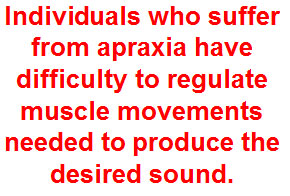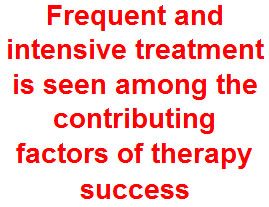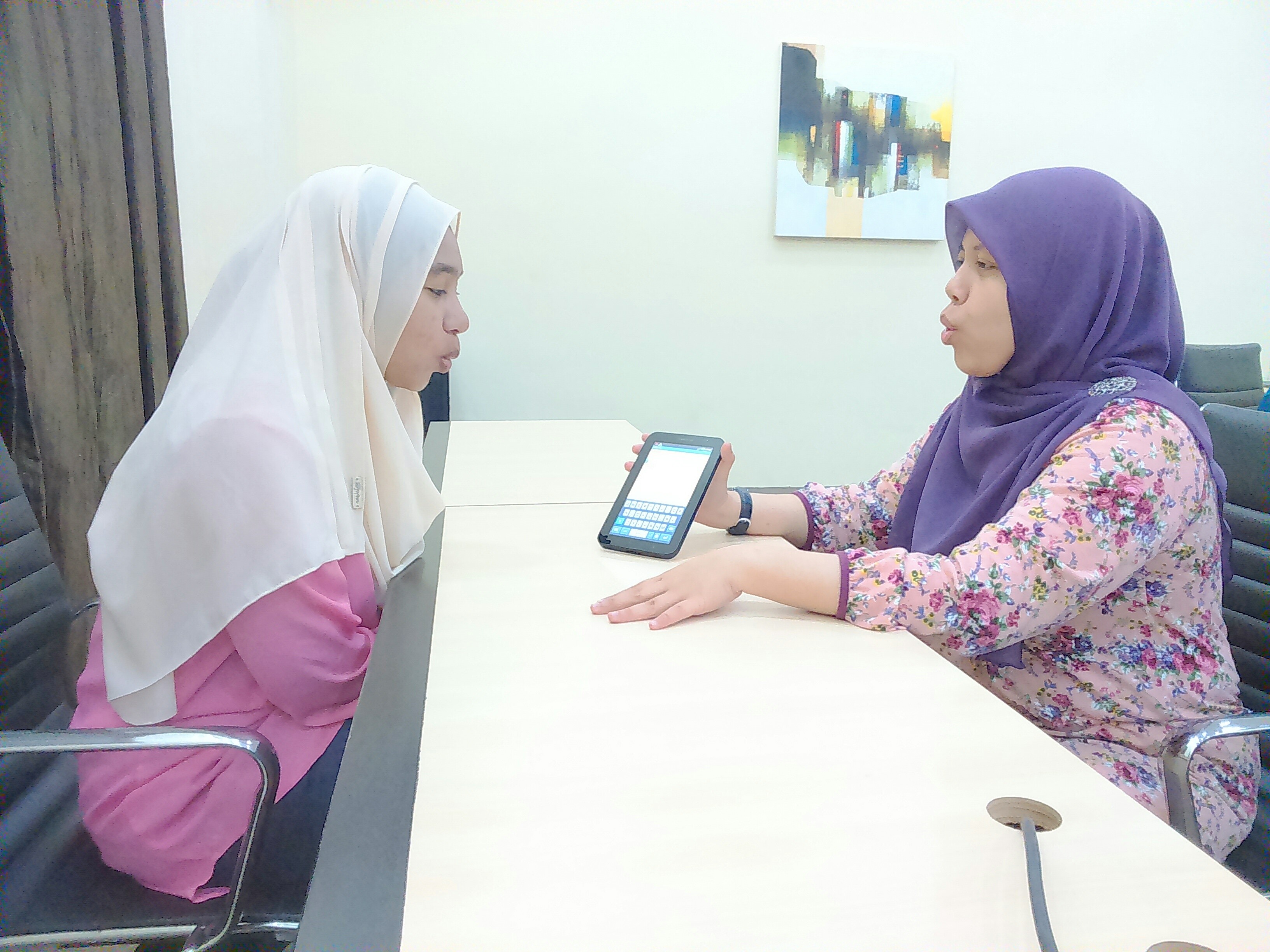What is Apraxia?
Apraxia is a disorder of the brain and nervous system in which the individual is unable to move the mouth and tongue to make sounds properly, though: –
- They understand the requests and instructions
- They want to say the word
- They know how to pronounce the words
- No weakness in the muscles of their face
What is the cause of apraxia?
Apraxia occurs due to damage to the brain that controls organ of speech (tongue and mouth) movement coordination. The main cause of apraxia are:
- Brain tumors
- Conditions that cause brain and nervous system to worsen progressively such as neurodegenerative diseases
- Dementia
- Stroke
- Traumatic brain injury
- Seizures
Apraxia always appear with the problem of communication such as aphasia and dysarthria. Apraxia can also occur among children. Symptoms of apraxia will become more apparent when the children grow up.
What are the symptoms of apraxia?
Individuals who suffer from apraxia have difficulty to regulate muscle movements needed to produce the desired sound. They always refer to a much different sound than the sound of the word that they want to say. They are also aware of this error.

Apraxia symptoms include:
- Difficult to imitate speech sounds and pronounce correctly.
- Errors of speech sounds produced are inconsistent.
- Rate of speech is slow
- The long word is more difficult to produce than the short word.
- Intonation and tone of the conversation is not normal
- Spontaneous speech is easier to utter (“How are you?”,”Thank you”)
- Could not produce all speech sounds for severe cases.
In addition, depression, frustration and hopelessness are among co-occurrence symptoms in people who suffer from apraxia.
How apraxia is diagnosed?
Speech-Language Therapists (SLT) will conduct formal and informal assessments to diagnose apraxia and determine the severity of the condition. The evaluation process usually involves the examination of the mouth movement, the intonation of speech and the speech sound production in a variety of contexts.
What is the therapy for apraxia?
The main goal of the treatment is to improve the ability to plan, organize and coordinate the muscle movements for speech. SLT will design and establish appropriate therapy based on the results of the assessment. SLT will utilize a variety of approaches to the treatment of apraxia. So far no single approach that can be confirmed as the most effective method. However, frequent and intensive treatment is seen among the contributing factors of therapy success
Speech therapy involves:
- Produce targeted sounds repeatedly to establish desired mouth movements
- Reduce the rate of speech
- Melodic intonation therapy
- Augmentative and alternative communication is used for severe cases
Support and encouragement from family members and friends are also very important in the treatment process.
What are the tips for the caregiver of individuals with apraxia?

- Provide a relaxed and peaceful environment for individuals with apraxia to communicate.
- Provide time and space for individuals with apraxia to perform a particular task. Do not force them to repeat the task if it is clearly difficult for them to implement. This will cause them to feel more depressed and disappointed which will in turn cause more severe symptoms of apraxia.
- Suggest alternative ways to communicate. For example, write the word to be spoken.
What are the tips for individuals with apraxia to communicate effectively?
- Avoid giving complex commands.
- Use simple phrases when talking to avoid misunderstandings.
- Talk with normal tone of voice.
- Provide communication aids (pen, paper, tablet) if necessary.
What other complications that may present with apraxia?
- Lack of confidence
- Social issues
References
- American Speech Language Association (2015). Apraxia of Speech in Adult http://www.asha.org/public/speech/disorders/ApraxiaAdults/ September 11,2015
- Freed, D. (2011).Motor Speech Disorders: Diagnosis & Treatment. Cengage Learning.
- Kortte, J. H., & Palmer, J. B. (2008). Speech and language disorders.Frontera: Essentials of Physical Medicine and Rehabilitation, 2nd ed. Philadelphia: Saunders Elsevier.
- Medline Plus (2014). Apraxia .https://www.nlm.nih.gov/medlineplus/ency/article/007472.htm September 11,2015
| Last Reviewed | : | 28 August 2020 |
| Writer / Translator | : | Fairus bt. Mukhtar |
| Accreditor | : | Nur Syuhada bt. Hosni |
| Reviewer | : | Nadwah bt. Onwi |








